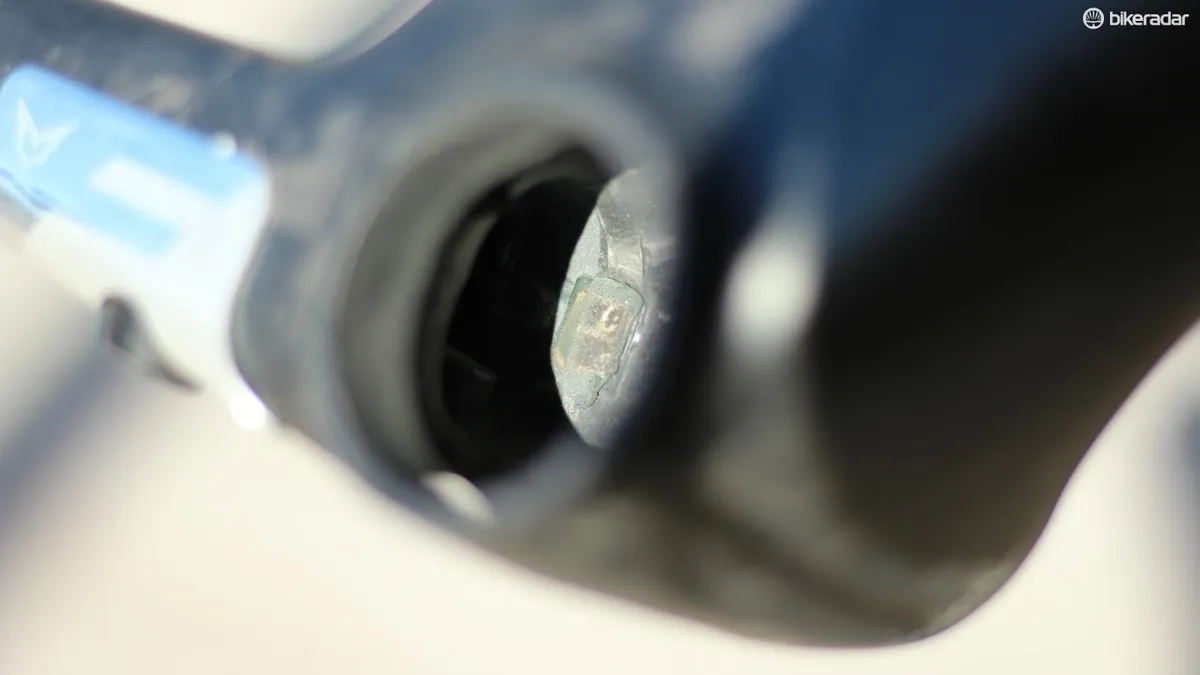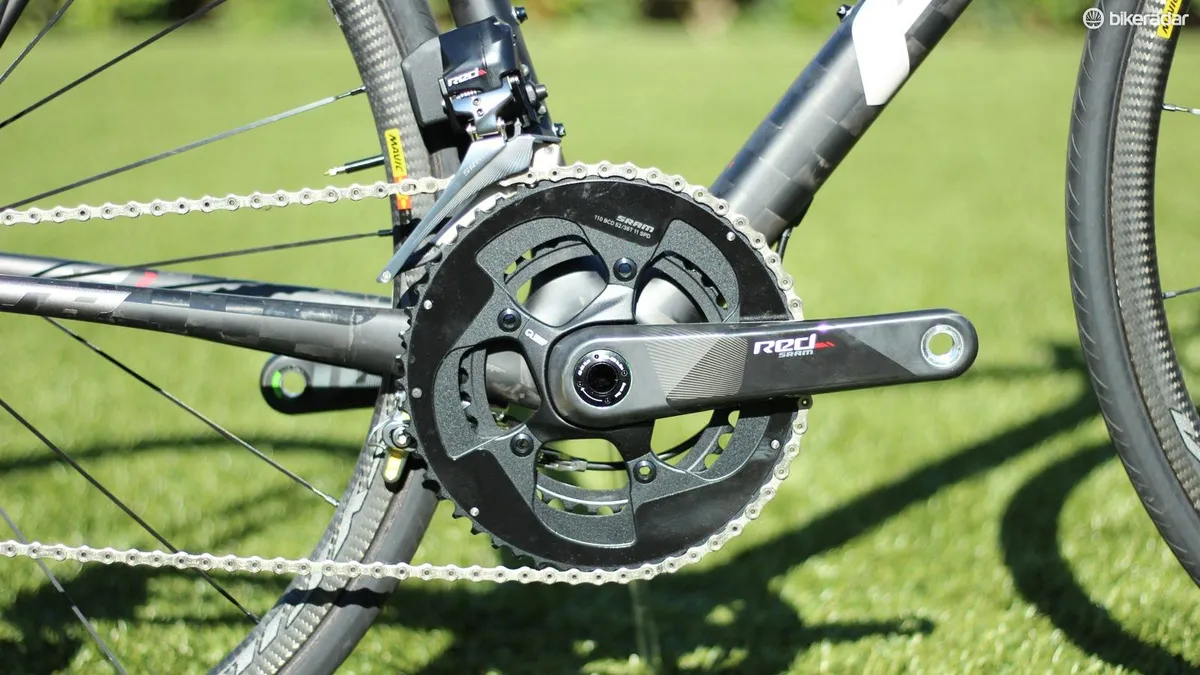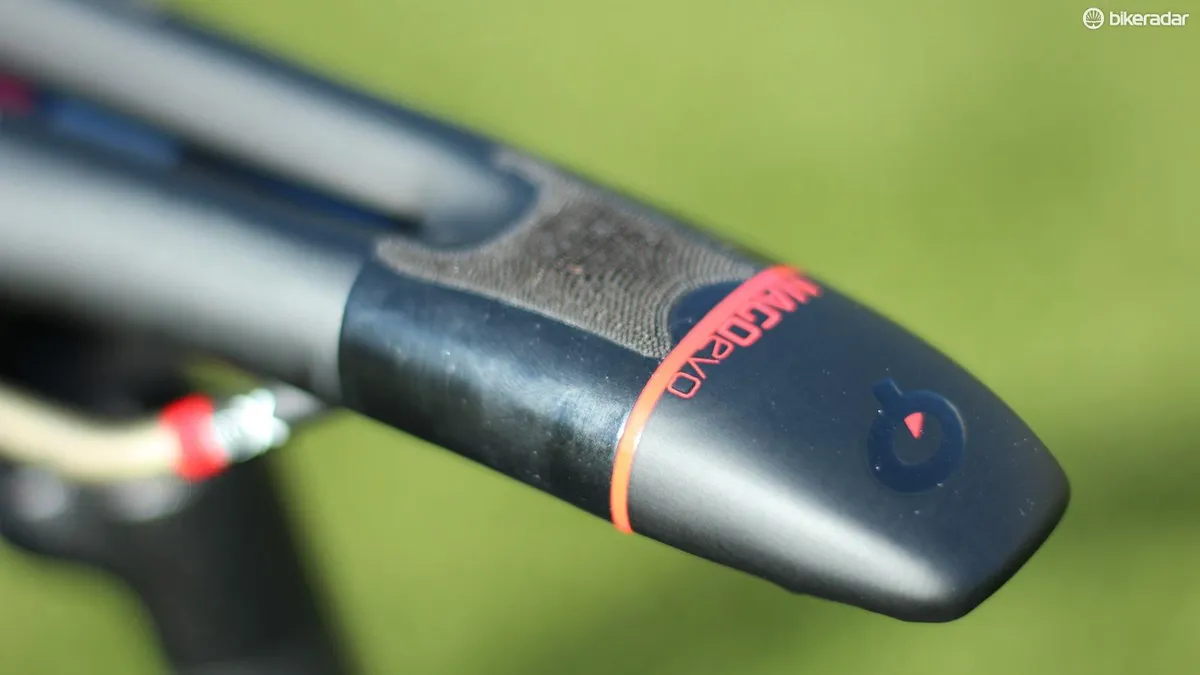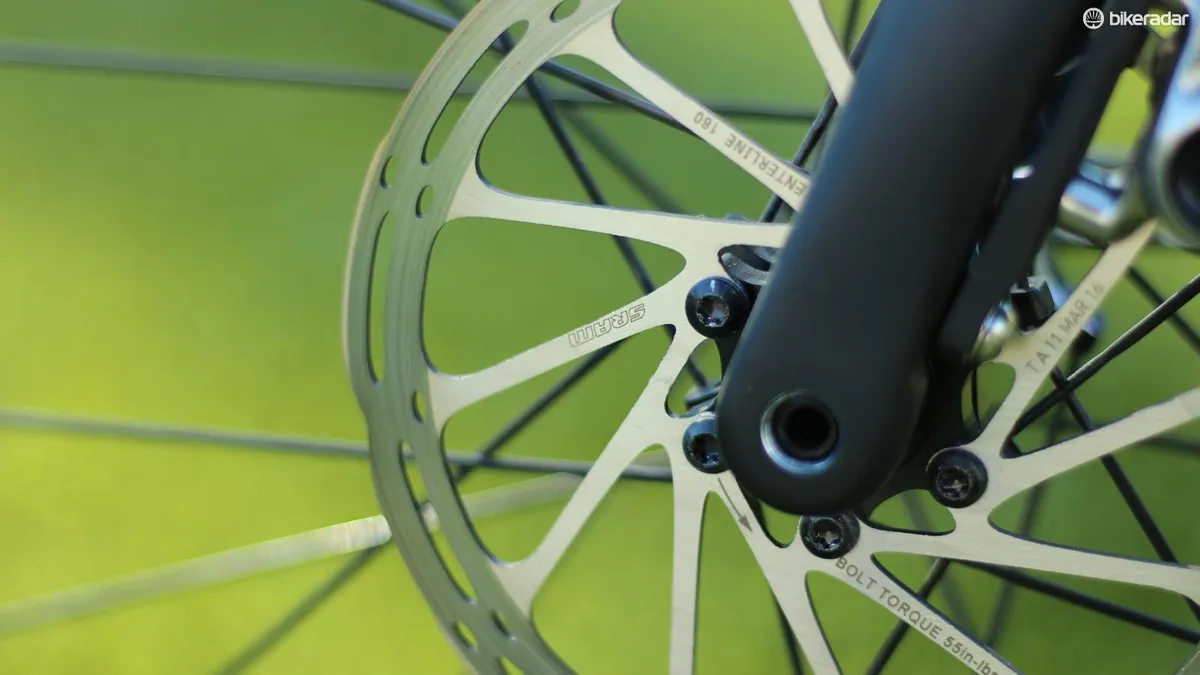The new Felt FR1 is the top model in the California company's new Felt Race lineup that features a laterally stiff BB386-based chassis, a plush rear end, thanks to long, unbound seatstays and thoughtful touches like integrated magnets for power meters, reflective paint and bar tape, and size-specific tuning of both carbon layups and headset-bearing size. I rode the $8,999 Felt FR1 with Zipp 202s on a loop near the company's base in Southern California, and found that the bike hit the sweet spot of taut efficiency and, yes, vertical compliance.
Put another way, when you stomp on the pedals, the bike launches forward with a minimum of flex, but it isn't a teeth-rattler when riding seated over rough pavement. The FR1 is no Trek Domane SLR or even a Madone in terms of a cush ride, but at 13.9lb / 6.3kg it can go toe-to-toe with any WorldTour race bike in terms of sharp handling and all-around performance.
Olympic gold three-peat? Kristin Armstrong’s Felt DA1
The numbers behind the new FR frame design
Felt overhauled its road bikes, splitting the lineup into the new FR race bikes and the new VR endurance machines. The new FR bikes use the massive (86.5mm) BB386 shell for maximum real estate upon which to build a stiff chassis. The wider shell allows for wider chainstays, which means two things: a stiffer rear end (by a claimed 30 percent over the outgoing F series) and improved tire clearance (to handle 28mm clinchers). Typically, these two traits are at odds with one another, said Felt road product manager Hubert Otlik.
Lighter and stiffer are also often at odds, but the FR1 frame weighs a claimed 685g, a 5 percent slimming on the outgoing F frame.

Some of that weight savings ties back into the comfort equation: removing the seatstay brake bridge subtracted not only weight but a little vertical stiffness that went along with the structure.
The new frame is a little taller at the front end (19mm on average across the sizes), with the height split between the fork and the head tube. Still, the FR1 is decidedly racy, with the 56cm frame for example having a 155mm head tube and a 572mm stack.
“The old F was always a nervous, pro-only type bike,” Otlik said. “The new changes are small but make the handling more confident.”
As the frames go up in size, their corresponding forks go down in rake, to maintain the ideal trail. Frame construction also varies by size, so the 43 and the 61cm frames having stiffness characteristics appropriate for their respective riders, and not a one-flex-fits-all solution. This is standard practice for Felt.

“When we first started making frames years ago we did this, and assumed everyone else did,” said company co-founder Jim Felt, adding that other companies have since adopted a similar design philosophy.
What is new for Felt with the new bikes is frame-size-specific lower bearings, something other brands have done in recent years. With the FR bikes, the 43 and 47cm bikes get the standard 1 1/8” lower bearing, the 51 and 54cm frames get a 1 ¼” bearing and the 56, 58 and 61cm frame have a 1.5” lower bearing.
Felt engineers were judicious with internal routing: electronic wires go inside, mechanical cables except for the rear brake cable are external. Otlik said this choice was made to keep the frame light and easy to work on. “Routing all the mechanical cables internally would have required a bigger hole, and thus more structural material around it,” he said.
In total, the new FR is “5 percent lighter, has a 4 percent higher stack, a 4 percent stiffer head tube and a 30 percent improved rear tire contact patch,” Otlik said, referring to the bike’s rear torsional stiffness.

Smart details on the FR line
A few things really impressed me with the FR bikes in general, which range from the alloy $799 FR60 to the eTap HydroHC $9,499 (UK/AU pricing not yet available). There are also six women’s bikes, which start at $799 for the FRW60 and go to $5,499 for the FRW2 Disc.
Reflective paint is used discreetly on the frameset logos and rear-facing designs on the seatstays. By discreet, I mean they look normal in daylight, but really pop at night under artificial light.

Similarly, Felt has padded and perforated bar tape with a 3M reflective base. Smart.
The electric-drivetrain bikes come with satellite shifters installed, with Blips under the tops on eTap bikes and sprint shifters under the inside of the hoods on the Di2 models.
The FR2, a Shimano Ultegra Di2 build, comes with a left-side Pioneer power meter. What’s more, all the carbon frames have built-it magnets, so you don’t have to glue or tape them on for power meters like Pioneer or SRM that require them (a pet peeve of mine).

First ride impressions
Laterally stiff yet vertically compliant… How many hundred times have you read or heard that phrase? It’s a corny cliché, but it’s a cliché for a good reason: a good road bike should be have efficient power transfer, keep its wheels aligned through corners or hard pedaling (laterally stiff) and be comfortable to ride (vertically compliant).
At the bike’s launch in Irvine, California, Felt senior design engineer Jeff Soucek passed around a neat demonstration tool that exemplifies how carbon fiber orientation dramatically affects a carbon structure like a bike. The simple tool has two t-shaped bars of carbon; one has straight fiber in line with the main bar, the second bar’s fibers are set at 45 degrees in relation to the length of the structure. With the straight fibers, the bar is firmly resists attempts to press it straight down or pull straight up, but bends easily when twisted. The bar with 45-degree fibers acts in the opposite manner: it’s easy to push and pull on, but very difficult to twist.

Felt certainly isn’t alone in how its engineers employ various types and orientations of carbon fabric into road frames. And the company’s mix of computer work like Finite Element Analysis and professional rider consultation isn’t novel either, working and then reworking prototypes until a final design is achieved. Still, both processes separate major brands like Felt from smaller brands that largely buy ‘off the shelf’ from Chinese factories.
On the road, the FR1 testifies to the many hours of design work. Much like the handheld carbon demonstration, the FR1 bends in some directions but not others. Stand up to accelerate, and the chassis offers a solid base against which to leverage the cranks. Pull on the bars, and the front end acts similarly. But coast across roughed-up asphalt and FR1 moves vertically ever so slightly, muting the harsher hits and diluting the vibrations.

On our 3hr ride we didn’t get the chance to rail many corners, but the handling felt intuitive and on-target when shooting through thick Southern California auto traffic or navigating the swells of group riding. Small inputs from the handlebars or the hips pointed the machine easily and precisely.
For my test FR1, Felt had the high-performance Schwalbe Pro One clinchers and Zipp 202 wheels installed instead of what will be stock Mavic Ksyrium Pro Carbon SL C wheels and corresponding clinchers. Having the latter this spring in Nice, I can vouch the wheels to be excellent, and the tires to be a huge leap forward for Mavic, too.
The FR1 comes with SRAM eTap, a 3T cockpit and a TRP direct-mount rear brake paired with a standard Red caliper up front.
I will post a full review of the FR1 with stock spec once I am able to ride it more.






























